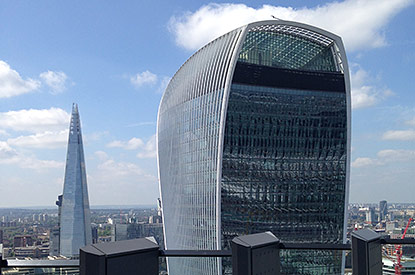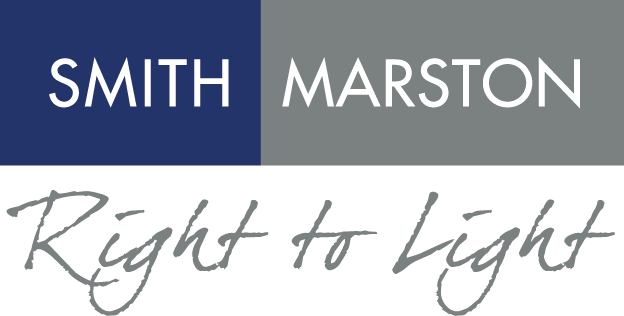Daylight & Sunlight Matters for Developers (Permitted Developments)
Conversions and Changes of Use
The Town and Country Planning (General Permitted Development) (England) Order 2015 sets out what works can be done as ‘Permitted Development’.
There are certain types of work surrounding the conversion of buildings that are Permitted Development, but to be able to achieve this, certain criteria must be first demonstrated to the Local Authority. These are summarised below, but in all cases, the conversion must be demonstrated to have adequate natural light in the converted premises will be available.
Our ‘Within’ Daylight and Sunlight Assessments cover this, and adopt the tests laid down in the BRE Guide “Site Layout Planning for Daylight and Sunlight – A Guide to Good Practice, 2nd Edition”. We report upon the levels of daylight and sunlight that will be enjoyed in the rooms in your new premises, to advise the local authority as to whether ‘adequate’ natural light will be achieved.
Permitted Development
Permitted development laws have changed in the UK in August 2020. It was announced that permitted development now included raising the height of buildings by up to 2 storeys without needing planning permission. This has opened up the potential for a number of buildings to expand vertically without losing valuable floor space, but rights to light issues are still an essential consideration.
Right to Light with Permitted Developments
Rights to light refer to a particular level of light enjoyed by a room or building that has been uninterrupted for a period of 20 years. Uninterrupted refers to the absence of solid structures nearby, reducing the amount of light that enters the space. Window coverings such as curtains or blinds do not affect this.
This can affect new build properties when it comes to permitted developments as adjacent older properties may have a legal right to light, affecting what you can and cannot build close by.
Can neighbours complain about permitted developments?
No. If the new structure has been granted planning permission, neighbours can only appeal the decision within 6 weeks of the permission granted by Judicial Review if a legal wrongdoing can be proven. This should not be taken lightly as it effectively means taking the local council to court.. If construction begins and a legal right to light injury was proven, the courts could award compensation, order the offending part of the build/object be removed or a combination of the two. The build can be halted altogether in extreme cases, although this is rare. It is best to try and settle the matter before the construction begins, as court proceedings can be very costly. This is where a specialist right to light surveyor can help. The surveyor will assess the change in light and determine whether you have a complaint case.
Most complaints about permitted developments by neighbours can be rectified with a discussion and negotiations on both sides. Settling any dispute outside of court is the most cost-effective option and will work towards keeping a neighbourly relationship in place.
Assessing good daylight and sunlight access
Right to light surveyors usually uses the 50:50 method to determine the light levels in a room. This involves calculating the percentage of the room’s area which can receive ‘adequate’ light. This assessment is carried out at 850mm above the ground and is considered adequately lit if at least half of the room can receive at least 0.2% of the sky dome. A right to light injury is when the area of a room which can see 0.2% of its light from the sky, is reduced to less than 50-55%.
Permitted Development Refused
If a neighbour plans a build that will unacceptably affect your daylight and sunlight, the permitted development could be refused. In this instance, if the neighbour accepts the decision, they may look to redesign the building to reduce the impact on your home.
If you are a homeowner planning a permitted development that will negatively affect your neighbours light and the permitted development is refused, you can consult right to light surveyors to redesign and recalculate the build to reduce the impact. Working with your neighbour and surveyors will help keep the peace in your area.
The types of PD requiring these types of reports are listed below:
- Regulation 13 amends Class M of Part 3 of Schedule 2 to the 2015 Order to add to the conditions of prior approval that the local planning authority must also consider the provision of adequate natural light to all habitable rooms by the proposed change of use from retail, hot food takeaway or specified sui generis uses to a dwellinghouse.
- Regulation 14 amends Class N of Part 3 of Schedule 2 to the 2015 Order to add to the conditions of prior approval that the local planning authority must also consider the provision of adequate natural light to all habitable rooms by the proposed change of use from specified sui generis uses to a dwellinghouse.
- Regulation 15 amends Class O of Part 3 of Schedule 2 to the 2015 Order to add to the conditions of prior approval that the local planning authority must also consider the provision of adequate natural light to all habitable rooms by the proposed change of use from office to dwellinghouse.
- Regulation 16 amends Class PA of Part 3 of Schedule 2 to the 2015 Order to add to the conditions of prior approval that the local planning authority must also consider the provision of adequate natural light to all habitable rooms by the proposed change of use from light industrial use to dwellinghouse.
- Regulation 17 amends Class Q of Part 3 of Schedule 2 to the 2015 Order to add to the conditions of prior approval, that the local planning authority must also consider the provision of adequate natural light to all habitable rooms by the proposed change of use from agricultural building to dwellinghouse.
Enquire about a Daylight & Sunlight Assessment
“Dear Adrian, Thought you might like to see the appeal decision received this afternoon. After all this time it is great news. Your report has undoubtedly helped in the final decision, so thank you very much from Jane and me for all your excellent work.”
“Smith Marston helped us gain planning approval on our two storey extension after a number of objections from neighbours. The advice they gave and the detailed letter to the council gave factual information to dismiss unfounded objections.”
Technical Information on Daylight & Sunlight Matters
Demonstration that a scheme satisfies the guidance contained with the BRE guide for daylight and sunlight can be very useful to the progress of a development scheme through the planning system.
We have been involved with numerous schemes where concerns have been raised by the planning officer and/or neighbours regarding daylight and sunlight to neighbouring existing buildings potentially affected by the proposed development. Often though we are able to demonstrate that the scheme satisfies the guidance described within the BRE document and thus remove this obstacle to the progression towards planning permission.
On some occasions, the BRE Daylight and Sunlight assessments are commissioned proactively by the developer to support a scheme whilst on other occasions this may be something requested by the planning department. It is worth noting that a planning application submitted without a Daylight and Sunlight assessment, but where one would be appropriate, may be delayed through the planning process if such a study is then requested by the planning department after submission of the planning application.
In addition to BRE assessments in relation to the effect of the development upon the neighbouring buildings and external amenity areas, ‘Within Development’ assessments can also be requested by Local Authorities to demonstrate that the development building itself will receive adequate natural daylight and sunlight.

Daylight & Sunlight Matters for Architects and Planning Consultants
Most of our work is carried out in conjunction with architects, or planning consultants, or on larger schemes, both! From sole practitioners to large national and international based practices, we aim to work alongside you and your client.
As an architect or planning consultant, you will no doubt be some of the first members of the team, and will be involved with the client from the off.
Your design will need to comply with a whole host of criteria to satisfy planning policies and, of course, our input will be just one aspect of a bigger picture.
By involving us early we can assess your scheme to advise on the impact it will have upon neighbouring property owners in terms of Daylight and Sunlight, and overshadowing to the neighbours’ garden areas.
You may also be asked to have your own design checked for compliance, and again, we can assess your own scheme to report upon the daylight and sunlight levels that the newly designed building will achieve.
Our reports are prepared based upon the requirements of the most widely recognised and used document in the UK for assessing good Daylight and Sunlight design. This is a document known as “Site Layout Planning for Daylight and Sunlight – A Guide to Good Practice, 2nd Edition” by Paul Littlefair. This is a nationally recognised publication, and whilst not mandatory, it has been adopted by many design practitioners, planning consultants and Local Authority Planning Departments throughout the UK.
Whilst we carry out many of these reports for developers, and occasionally Local Authorities themselves, on occasion we find that a developer has been asked for such a report when one is not really required. We have on several occasions helped to persuade Local Authorities to drop the need for a full assessment with a simple letter, thus saving your client the cost of a full report, and the associated time delay.
At Smith Marston, we want to provide a good, reliable service, and help you get your scheme over the line. We report accurately, and we will not simply tell you what you want to hear, but, what you need to hear. Reporting must always be credible and stand up to scrutiny so as not to undermine our service and put your application at risk of being refused.
Whilst we prepare Daylight and Sunlight Assessments, we can also add value to developer clients by being able to ‘bolt on’ a legal Right of Light Assessment as well. Not all Daylight and Sunlight consultants can do this, and this sets us apart from them. We can also provide a comprehensive Party Wall suite of services if required, allowing us to provide a number of neighbourly matter services under one roof.

